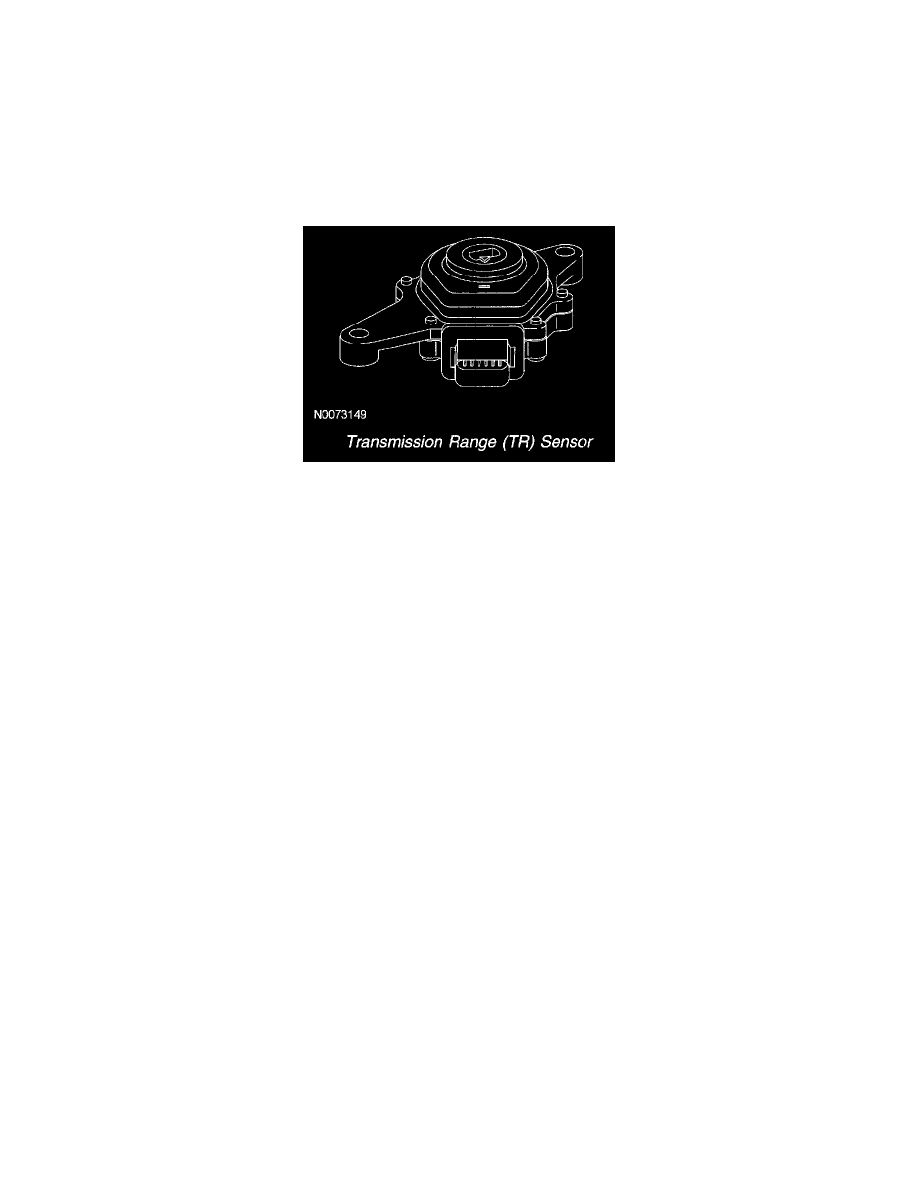Fusion FWD L4-2.5L Hybrid (2010)

Transmission Position Switch/Sensor: Description and Operation
ENGINE CONTROL COMPONENTS
Transmission Range (TR) Sensor
Overview
The TR sensor communicates the gear selector position the driver selects to the PCM. The PCM determines a gear mode based on the TR input and
the vehicle speed signal. The PCM then broadcasts a gear mode message over the communication link. The TCM uses the gear mode message to
engage the transaxle in the gear the driver selected. The other control modules use the gear mode message to control the rear lamps or a brake shift
interlock solenoid. The TR sensor is mounted on the transmission assembly and the sensor shaft is moved by the selector shaft.
Transmission Range (TR) Sensor
TR Sensor and PCM Interface
The TR sensor is a linear potentiometer device that provides the PCM with a percentage of input voltage proportional to the rotational angle of the
sensor shaft. The TR sensor consists of:
-
two independent signals (TR-A1 and TR-A2)
-
two 5 volt reference lines (TR-VREF1 and TR-VREF2)
-
two signal return lines (TR-RTN1 and TR-RTN2)
The TR-A1 signal has a positive voltage slope, meaning the voltage increases when the sensor angle increases. The typical TR voltage ranges from
approximately 0.7 volt in the PARK position to approximately 3.8 volts in the LOW gear position. The TR-A2 signal has a negative voltage slope.
Voltage decreases as the sensor angle increases. The typical voltage for the TR-A2 is approximately 4.3 volts in the PARK position to approximately
1.2 volts in the LOW gear position.
The TR-VREF circuits are bussed together internal to the TR sensor, and both TR-RTN circuits are bussed together internal to the TR sensor. One of
the TR-VREF and one of the TR-RTN circuits are dedicated signals from the PCM. This design of redundant signals protects against an open circuit
condition.
